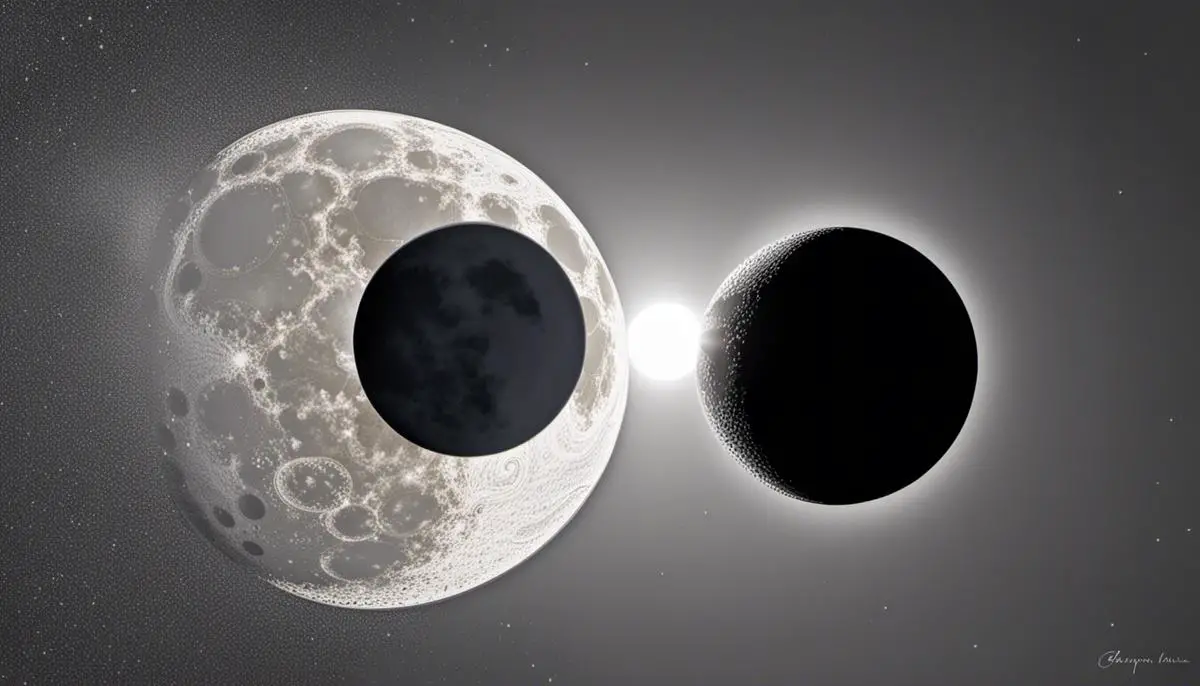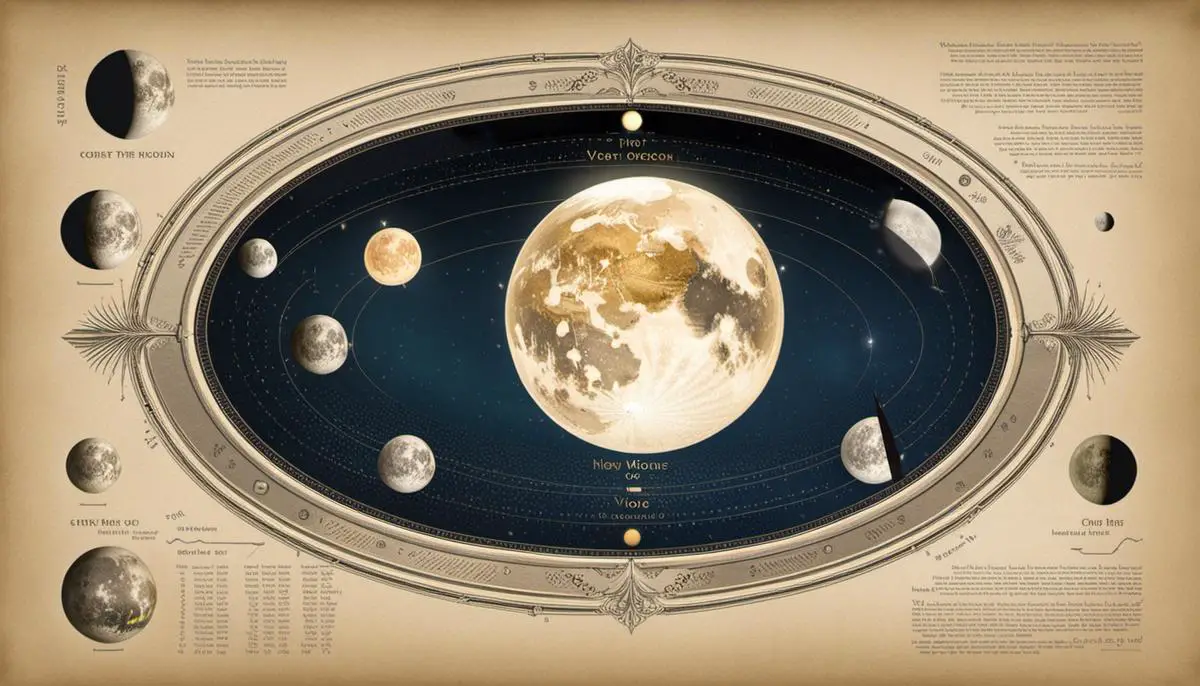The moon, cloaked in mystery and mythology, has long fascinated humanity as it waxes and wanes in the inky depths of the night sky. A particularly interesting phase of this celestial body is the ‘new moon’, a term that often evokes curiosity. This is an occurrence where the Earth’s only natural satellite is positioned between the Earth and the Sun, thereby rendering it virtually invisible from our view. Our exploration commences with a detailed understanding of a new moon- its causes and precise timing. We then traverse the wide-ranging impacts that a new moon can exert- on earthly tides, the intricate web of ecology, and the diverse cultural and religious contexts scattered across our planet.
Defining a New Moon
Understanding New Moon: An Astronomical Phenomenon
The new moon phase is the first phase of the moon’s cycle, unequivocally marked by an astronomical event that occurs when the moon is in conjunction with the sun and invisible from Earth, or shortly thereafter when it appears as a slight crescent. In other words, the moon is located between the Earth and the Sun during the new moon phase. Because the side of the moon that’s lit by the sun is facing away from our planet, we see no illumination; the moon is shrouded in darkness, making it appear ‘new.’
Understanding the New Moon: Factors and Influences
The new moon is an astronomical event that can be best understood by analyzing the Moon’s trajectory in relation to the Earth and the Sun. Approximately every 29.5 days – the length of the lunar cycle – the sky is graced by a new moon. As the Moon orbits Earth, the relative position between the Sun and the Moon constantly changes, giving birth to the various lunar phases. A new moon occurs when the angle between the Moon and the Sun is at its smallest, with the Sun located behind the Moon, this results in Earth-facing the Moon’s unilluminated side. As the lunar month unfolds, this angle widens, progressively revealing more of Moon’s sunlight-basking side. The period between two new moons, also known as the synodic month or lunation, encompasses the first quarter, the full moon, the last quarter, and finally culminates into a new moon, signaling the onset of the subsequent lunar cycle. Thus, the new moon acts as the marker of a new lunar cycle, setting the stage for the Moon to illuminate progressively as the month advances.

Effects and Significance of a New Moon
Interplay of the New Moon and Earth’s Tides
The cyclical pattern of the Moon is also accountable for Earth’s tidal phenomena. During a new moon phase, the Moon is located between the Earth and the Sun. Consequently, both celestial bodies exert their gravitational pull in the same direction, resulting in relatively higher tides, commonly referred to as “spring tides”. This term spring has no correlation to the season, but is derived from the motion of the tide to “spring forth”. Interestingly, these sprightly high tides occur bi-monthly in sync with the lunar phase, particularly during both the full moon and new moon stages.
Ecological and Cultural Significance of the New Moon
The new moon phase and its ensuing darkness have a profound impact on nocturnal creatures. Some species of birds, insects, and animals synchronize their behaviors with the moon cycle. For example, certain types of zooplankton rise to the surface only during the concealed phase of the new moon to feed, thereby avoiding potential predators.
Culturally, the new moon has various connotations and significances. Many cultures and religions hold special observances or practices during a new moon. For instance, in Judaism, the new moon signifies the start of each month in the Hebrew calendar. Moreover, in terms of astrology, the new moon is often viewed as a time of beginnings and opportunities, a time to set intentions and start anew. This broad range of influences underscores the universal significance of the moon’s cycle throughout civilizations and ecosystems alike.

While the new moon may appear to be just another phase in the lunar cycle to us, its significant influence on various aspects should not be underestimated- be it natural phenomena like tidal ebbs and flows or the wide swathes of cultural and religious beliefs it permeates. Humanity’s relationship with the moon, particularly during its new phase, embodies an interface where science meets folklore, where astronomical facts collide with socio-cultural interpretations. So, the next time you find yourself in the embrace of an inky night with the moon nowhere to be found, remember, it is a new moon, and it means a lot more than just an invisible moon.
![]()
